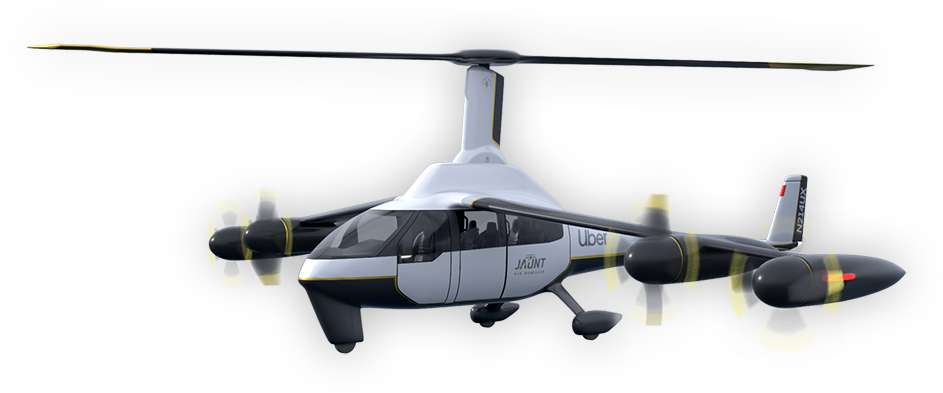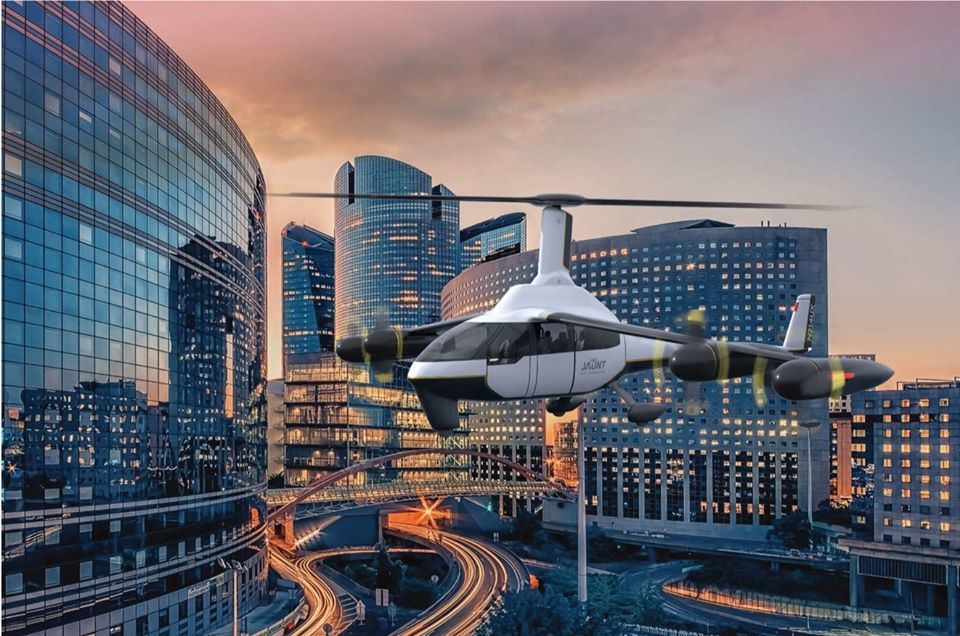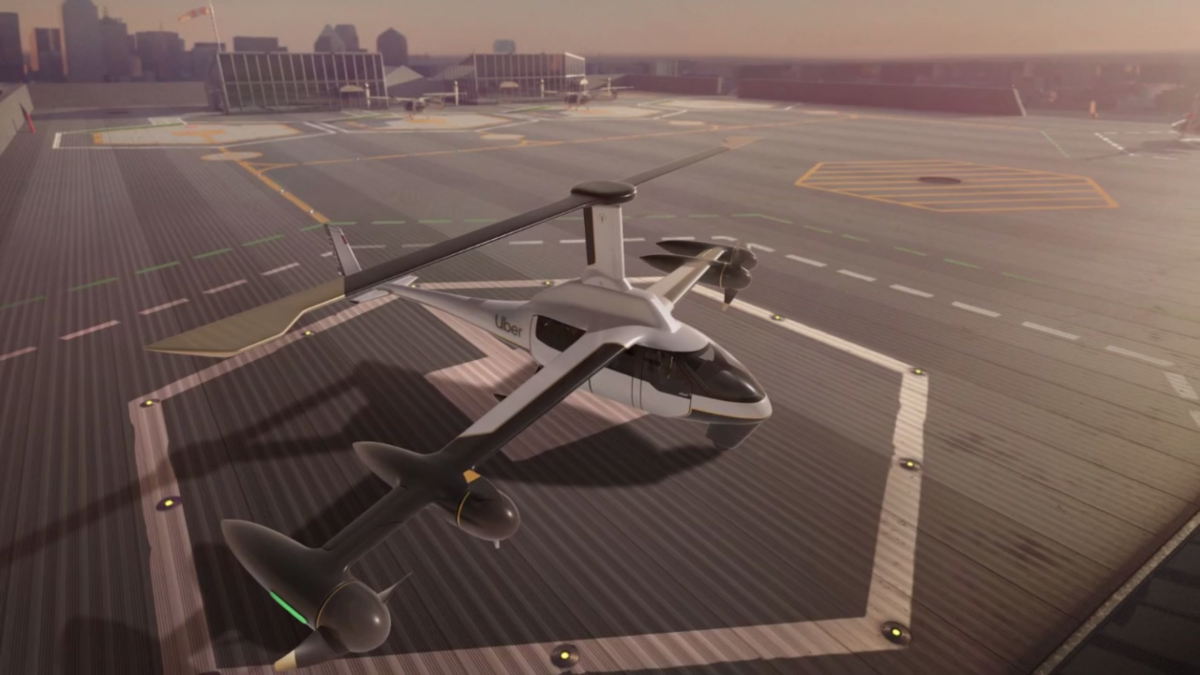This eVTOL air taxi design looks like a weird helicopter/plane hybrid, but it’s the safest of all the eVTOL designs we’ve ever seen, and it has another killer advantage in that it requires no special certification. That’s huge news in the emerging 3D commuting market, because it could make this thing much, much cheaper to get off the ground.
To understand why this thing is such a great idea, let’s recap two of the main hurdles that every other eVTOL designer is facing: safety and certification. The safety issue seems huge to us, although many of the eVTOL manufacturers we speak to don’t seem to see it as insurmountable. In a total failure scenario, all eVTOLs designed around multiple small rotors have a bit of an issue: they’ll simply plummet to the ground.
You can solve this problem using a ballistic parachute that fires out and brings them down gently, but below a certain altitude, maybe 120 feet or so, these ‘chutes don’t have time to fully open and deploy, leaving these aircraft negotiating what we’ve been calling a “death zone” every time they take off and land. It’s only for a short amount of time, but the consequences of total failure in this zone would be equally total, and just one such crash in the early days of air taxi services would undermine passengers’ faith in the entire eVTOL sector.
Then there’s certification; in order to operate commercially as all these players intend, not only does each design need to be fully certified, but the FAA and its other equivalent bodies globally need to create entire new classes of aircraft, as well as the regulations required to make sure things are done safely and properly.
The money involved in a complex certification process like this, particularly for transitioning multi-mode aircraft, is mind-boggling. We’re hearing numbers around the half-billion mark, although there’s obviously no official price tag. That’s no chump change, and it’ll seriously test the appetite investors have for this sector, as well as putting considerable price pressure on these services when they launch. It’s going to be hard to deliver per-mile prices around the same as a regular Uber when you’ve got 500 million bucks weighing down your balance sheet.

Jaunt Air Mobility
Enter Jaunt Air Mobility, a startup from 2018 that has somehow escaped our attention until now. Jaunt’s Reduced Rotor Operating Speed Aircraft, or ROSA, is a big, gawky-looking thing with a helicopter-like top rotor and a big ol’ set of wings the width of a small plane. It does not look half as cool as a Lilium, or a Joby, or a Skai. But its capabilities dance neatly around the two elephants in the room outlined above.
The ROSA handles VTOL duties using that large, slow, powered top rotor. It needs no tail rotor to balance the main rotor’s torque, since there are four large electric props along the wing. These keep the aircraft from going into a tailspin while it’s hovering, and then provide forward thrust to bring it up to cruise speed. Once it’s got some speed up, the top rotor becomes completely unloaded for low-drag, high-efficiency flight as the wings take over lift generation.
It’s a development on the CarterCopter design we first covered in 2004; Jaunt has acquired all rights to the Carter Aviation Slow Rotor Compound. Carter’s 4-seat Personal Air Vehicle demonstrator aircraft has completed over 1,000 takeoffs and landings and 100 hours of flight testing, reaching speeds up to 214 mph (344 km/h) and a max altitude up to 18,000 feet, which was only limited by visual conditions.

Jaunt Air Mobility
Safety-wise, the ROSA is able to make a safe landing using autorotation, much like a helicopter. If all power is lost, the top rotor will still provide enough lift to bring the aircraft down gently and controllably, no matter the altitude or airspeed. That’s a huge advantage.
Certification-wise, it fits an existing category as a “gyrodyne,” which allows it to be certified under FAA Part 29 rotorcraft requirements. Despite the fact that there hasn’t been a gyrodyne certified in the US for several decades, Part 29 regulations are well understood, both by aviation engineers and by the regulators themselves. Jaunt is designing specifically to create an aircraft that will be easy to certify, radically lowering the cost of getting this thing into full-scale commercial use.
The slow top rotor makes it much quieter, particularly when you’re in cruise flight, when the rotor can sometimes spin so slowly that you can see it. Noise reduction will be a significant target in this space, if squads of these are going to start ferrying people around urban areas. Jaunt projects this thing’ll offer noise levels between 50-66 percent lower than a regular helicopter or fixed wing plane.
Another key benefit of the ROSA design is its low regular maintenance requirements. The top rotor uses none of the bearings or pitch links that a helicopter uses. Jaunt says it’s using elastomerics for pitch control, and we’re interested to learn more about that. But the upshot is that this simple, clean, bearingless design should allow very long periods between inspection requirements, something akin to a fixed wing plane, which will further help with keeping operating costs down. Mind you, this is in comparison to helicopters; most eVTOLs will be relatively low-maintenance affairs.
One other trick Jaunt has up its sleeve is its LevelFly technology; the entire top pylon holding the main rotor is designed to tilt, allowing the cabin to easily be balanced no matter how many passengers are on board, or where they sit. This should also help keep things comfortable in the cabin during the transitions between VTOL and winged flight, a complex phase that could involve some pretty uncomfortable tilting in other eVTOL designs.

Jaunt Air Mobility
Jaunt is run by some pretty serious cats. CEO Kaydon Stanzione was a senior engineer at Boeing, an expert advisor to the DOD on VTOL aircraft programs, a US/NATO test pilot and engineer, a serial inventor across many disciplines and a successful entrepreneur and author. CTO Martin Peryea has been VP of Engineering at Triumph Aerospace Structures, and VP of Commercial Engineering at Bell Helicopters, where he was also the Chairman of the Product Safety Board and Chief Engineer on the Bell 525. There is no lack of hardcore aviation industry knowledge here.
The company says it’s “self-funded, and sufficiently funded to get to the next level.” It’s one of the partners that’s been chosen for the Uber Elevate program, and the Jaunt team has set up partnerships with BAE Systems, Triumph Aerospace Structures and Honeywell among others to make this a reality.
There are of course still many unknowns, including what kind of range and recharge Jaunt is expecting from a battery-electric powertrain. But with certification expected by 2023, followed by production and commercialization of the service around 2025, there’s plenty of room for the kinds of battery developments that will be needed to make air taxis a viable business with acceptable range and charging capabilities.
Current battery density and slow charging will be a thorn in the side of every eVTOL startup, with the exception of Alakai Skai, which will be able to deliver huge range and super-quick refills if it can figure out how to supply its fleet with liquid hydrogen at its main landing points.
We’ve reached out to see if we can get hold of the Jaunt team for a chat, but at the moment this looks like one of the strongest entries in the eVTOL market, and one of the ones most likely to succeed early, and certainly the only one we’d let our moms ride in right now (just to be clear, we really like our moms). Check out a video below, in which the Jaunt team present at an Uber Elevate event.
Jaunt Air Mobility at Uber Elevate Summit in 2019
Source: Jaunt Air Mobility via Robb Report
Source of Article